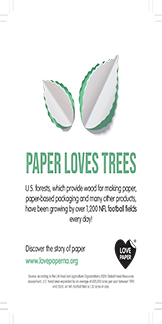BOISE, Idaho (News release) -- Boise Cascade Company reported net income of $62.0 million, or $1.64 per share, on sales of $1.7 billion for the second quarter ended June 30, 2025, compared with net income of $112.3 million, or $2.84 per share, on sales of $1.8 billion for the second quarter ended June 30, 2024.
"During the second quarter of 2025, we experienced sequential volume growth driven by seasonally stronger activity, although underlying demand for new residential construction remained muted," said Nate Jorgensen, CEO. "While we incurred expected costs related to the Oakdale plywood mill outage, the completion of this modernization project marks a significant milestone, enhancing operational efficiency, strengthening reliability, and reinforcing the value of self-sufficient veneer production as a key competitive advantage. As we navigate a dynamic market environment, our actions will address near-term challenges while continuing to invest in opportunities that position Boise Cascade for sustainable growth in the years ahead."
Second Quarter 2025 Highlights
|
|
|
2Q 2025 |
|
2Q 2024 |
|
% change |
|||
|
|
|
(in thousands, except per-share data and percentages) |
|||||||
|
Consolidated Results |
|
|
|
|
|
|
|||
|
Sales |
|
$ |
1,740,114 |
|
$ |
1,797,670 |
|
(3 |
)% |
|
Net income |
|
|
61,985 |
|
|
112,292 |
|
(45 |
)% |
|
Net income per common share - diluted |
|
|
1.64 |
|
|
2.84 |
|
(42 |
)% |
|
Adjusted EBITDA 1 |
|
|
119,000 |
|
|
181,207 |
|
(34 |
)% |
|
Segment Results |
|
|
|
|
|
|
|||
|
Wood Products sales |
|
$ |
447,235 |
|
$ |
489,823 |
|
(9 |
)% |
|
Wood Products income |
|
|
13,976 |
|
|
72,780 |
|
(81 |
)% |
|
Wood Products EBITDA 1 |
|
|
37,292 |
|
|
95,050 |
|
(61 |
)% |
|
Building Materials Distribution sales |
|
|
1,614,915 |
|
|
1,655,221 |
|
(2 |
)% |
|
Building Materials Distribution income |
|
|
78,033 |
|
|
85,400 |
|
(9 |
)% |
|
Building Materials Distribution EBITDA 1 |
|
|
91,848 |
|
|
97,141 |
|
(5 |
)% |
|
1 For reconciliations of non-GAAP measures, see summary notes at the end of this press release. |
In second quarter 2025, total U.S. housing starts and single-family housing starts decreased 1% and 8%, respectively, compared to the same period in 2024. On a year-to-date basis through June 2025, total housing starts and single-family housing starts decreased 1% and 7%, respectively, compared to the same period in 2024. Single-family housing starts are the key demand driver for our sales.
Wood Products
Wood Products' sales, including sales to Building Materials Distribution (BMD), decreased $42.6 million, or 9%, to $447.2 million for the three months ended June 30, 2025, from $489.8 million for the three months ended June 30, 2024. The decrease in sales was driven by lower sales prices for LVL and I-joists (collectively referred to as EWP). Lower plywood sales volumes and sales prices also contributed to the decrease in sales. In addition, lower sales volumes for I-joists resulted in decreased sales. These decreases were offset partially by increased sales volumes for LVL. Wood Products' segment income decreased $58.8 million to $14.0 million for the three months ended June 30, 2025, from $72.8 million for the three months ended June 30, 2024. The decrease in segment income was due to lower EWP and plywood sales prices, as well as higher per-unit conversion costs primarily as a result of downtime to complete the modernization projects at our Oakdale, Louisiana veneer and plywood mill. In addition, lower plywood sales volumes and an unfavorable profit in inventory adjustment contributed to the decrease in segment income. These decreases in segment income were offset partially by a $3.9 million gain on the sale of a non-operating property.
Comparative average net selling prices and sales volume changes for EWP and plywood are as follows:
|
|
|
2Q 2025 vs. 2Q 2024 |
|
2Q 2025 vs. 1Q 2025 |
|
|
|
|
|
|
|
Average Net Selling Prices |
|
|
|
|
|
LVL |
|
(10)% |
|
(3)% |
|
I-joists |
|
(8)% |
|
(2)% |
|
Plywood |
|
(6)% |
|
--% |
|
Sales Volumes |
|
|
|
|
|
LVL |
|
8% |
|
18% |
|
I-joists |
|
(5)% |
|
14% |
|
Plywood |
|
(7)% |
|
(2)% |
Building Materials Distribution
BMD's sales decreased $40.3 million, or 2%, to $1,614.9 million for the three months ended June 30, 2025, from $1,655.2 million for the three months ended June 30, 2024. Compared with the same quarter in the prior year, the decrease in sales was driven by a sales price decrease of 2%, as sales volumes were flat. By product line, commodity sales decreased 5%, general line product sales increased 4%, and EWP sales (substantially all of which are sourced through our Wood Products segment) decreased 12%. BMD segment income decreased $7.4 million to $78.0 million for the three months ended June 30, 2025, from $85.4 million for the three months ended June 30, 2024. The decrease in segment income was driven by increased selling and distribution expenses and depreciation and amortization expense of $12.1 million and $2.1 million, respectively. These decreases to segment income were offset partially by a gross margin increase of $3.4 million, resulting primarily from increased margins on general line products, which were offset partially by decreased margins on commodity and EWP products. Additionally, segment income benefited from a $3.8 million gain on the sale of a non-operating property.
Balance Sheet and Liquidity
Boise Cascade ended second quarter 2025 with $481.0 million of cash and cash equivalents and $395.2 million of undrawn committed bank line availability, for total available liquidity of $876.2 million. The Company had $450.0 million of outstanding debt at June 30, 2025.
Capital Allocation
We expect capital expenditures in 2025, excluding potential acquisition spending, to total approximately $220 million to $240 million. This level of capital expenditures could increase or decrease as a result of several factors, including acquisitions, efforts to further accelerate organic growth, exercise of lease purchase options, our financial results, future economic conditions, availability of engineering and construction resources, and timing and availability of equipment purchases.
For the six months ended June 30, 2025, the Company paid $18.4 million in common stock dividends. On July 31, 2025, our board of directors declared a quarterly dividend of $0.22 per share on our common stock, payable on September 17, 2025, to stockholders of record on September 2, 2025.
For the six months ended June 30, 2025, the Company paid $86.0 million for the repurchase of 837,352 shares of our common stock. In July 2025, the Company repurchased an additional 117,000 shares of our common stock at a cost of approximately $10 million. Subsequent to these share repurchases, there were approximately 850,000 shares available for repurchase under our existing share repurchase program.
Outlook
Demand for the products we manufacture, as well as the products we purchase and distribute, is closely tied to new residential construction, residential repair-and-remodeling activity, and light commercial construction. Residential construction, particularly new single-family construction, remains a key driver of demand for the products we manufacture and distribute. During the past quarter, the operating environment reflected adjustments by large public homebuilders, who moderated their building pace to align with a demand environment shaped by affordability considerations, cautious consumer sentiment, and broader economic conditions. Evolving market conditions have led to reduced home turnover and households delaying big projects impacting repair-and-remodeling spending. Near-term end market demand has eased and will continue to be influenced by factors such as mortgage rates, home affordability, home equity levels, home sizes, new and existing home inventory levels, unemployment rates, and consumer confidence. However, long-term demand drivers for residential construction, including an undersupply of housing units, aging U.S. housing stock, and elevated levels of homeowner equity, remain strong and continue to support the industry's fundamentals.
As a manufacturer of plywood, a commodity product, we remain subject to fluctuations in product pricing and input costs. Our distribution business, which purchases and resells a diverse range of products, experiences opportunities for increased sales and margins during periods of rising prices, while periods of declining prices may present challenges. Future product pricing, particularly for commodity products, is expected to remain dynamic, influenced by economic conditions, industry operating rates, supply disruptions, duties, tariffs, transportation constraints, inventory levels, and seasonal demand patterns. For the balance of 2025, our rates of production and inventory stocking positions, will be influenced by end market demand signals and channel inventory decisions of our customer base.






















